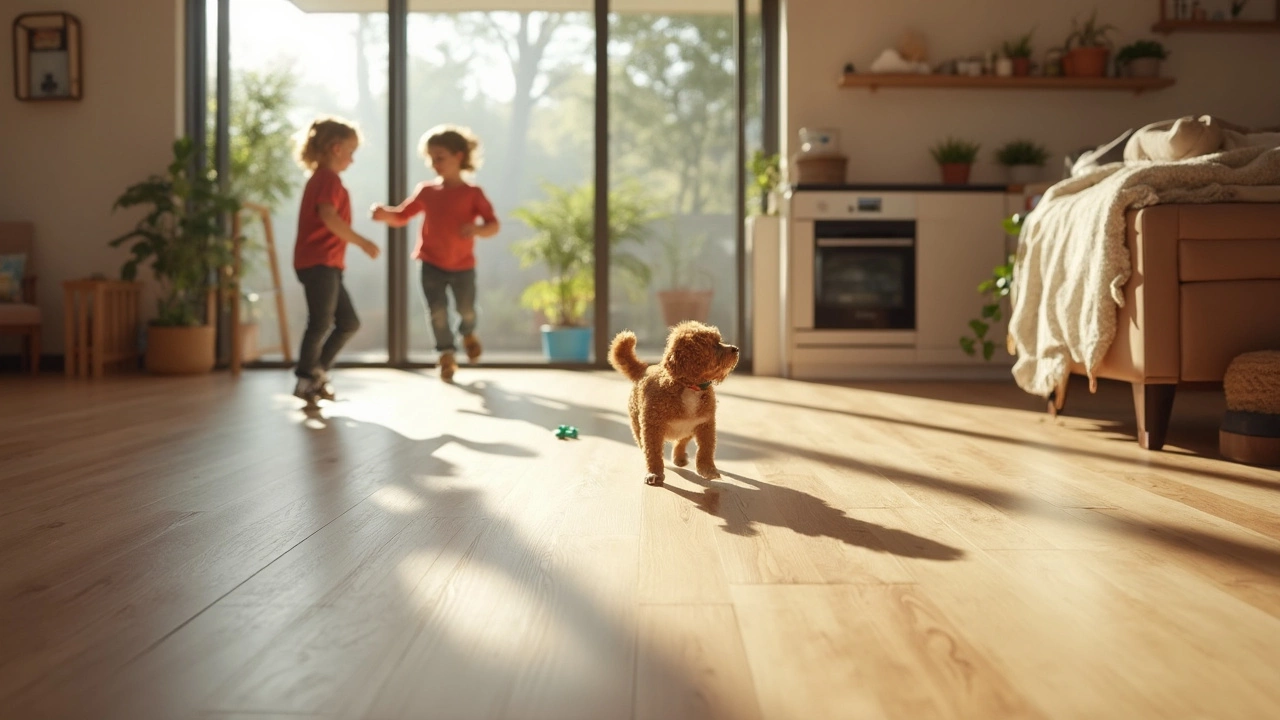Scratch-Resistant Flooring: Tough Surfaces That Look Great
If you’re fed up with dents and marks on your floor, you’ve probably heard the term "scratch‑resistant" tossed around. It’s not a magic label – it means the surface can take a lot of everyday abuse without showing ugly scratches. That’s a win for families with kids, pets, or anyone who likes to rearrange furniture often.
What Makes a Floor Scratch‑Resistant?
Most scratch‑resistant floors get their strength from a hard wear layer on top of the material. In laminate, it’s a clear, tough coating that’s tougher than the wood‑based core underneath. Luxury vinyl plank (LVP) uses a dense, PVC surface that resists dents and scratches alike. Even engineered hardwood can have a protective top coat that’s built to handle daily traffic.
The wear layer is measured in mils – the thicker it is, the better the protection. A 20‑mil wear layer on a good laminate will stand up to trash cans, pet claws, and dropped objects much longer than a thin layer. Look for products that mention a “scratch‑resistant” or “scratch‑proof” warranty for extra peace of mind.
Choosing & Caring for Scratch‑Resistant Floors
When you shop, think about the room’s traffic and style. High‑traffic areas like kitchens and hallways benefit from a thicker wear layer and a matte finish that hides minor scuffs. For a softer feel underfoot, LVP offers warmth and quiet, plus it handles spills well.
Installation matters too. Click‑lock planks are DIY‑friendly and still give you a solid surface. If you’re hiring pros, ask them to leave a small expansion gap around walls – it lets the floor breathe and prevents buckling.
Maintenance is simple: sweep or vacuum regularly to get grit out of the way, then mop with a cleaner made for the floor type. Avoid harsh chemicals and abrasive pads; they can wear down the protective layer faster than any scratch. A quick spot‑clean with a damp cloth is usually enough for spills.
Got pets? Keep their nails trimmed and use felt pads under heavy furniture. These small steps keep the floor looking fresh for years. Most manufacturers will also stand behind their scratch‑resistance for a few years, so keep your receipt and note the warranty period.
Cost-wise, scratch‑resistant laminate is often the most budget‑friendly, while LVP can be a bit pricier but offers extra moisture resistance – perfect for bathrooms or basements. Engineered wood sits in the middle, giving you a natural look with a durable surface.
Bottom line: a scratch‑resistant floor gives you the look you want without the worry of everyday marks. Pick a material that matches your lifestyle, follow the simple care tips, and you’ll enjoy a floor that stays sharp for the long haul.
Best Flooring That Doesn't Scratch: Real-Life Solutions
- Gavin Whitaker
- |
- |
- 0
Looking for flooring that stands up to scratches? Let's break down the real options that work in busy homes, especially if you’ve got kids, pets, or just hate seeing marks on your floors. We’ll compare different materials, spotlight which ones really hold up, and share some quick tricks to keep your floors looking sharp. No fluff—just what works and what doesn't. If you’re tired of constant repairs or nagging over shoes indoors, this guide’s for you.
View more